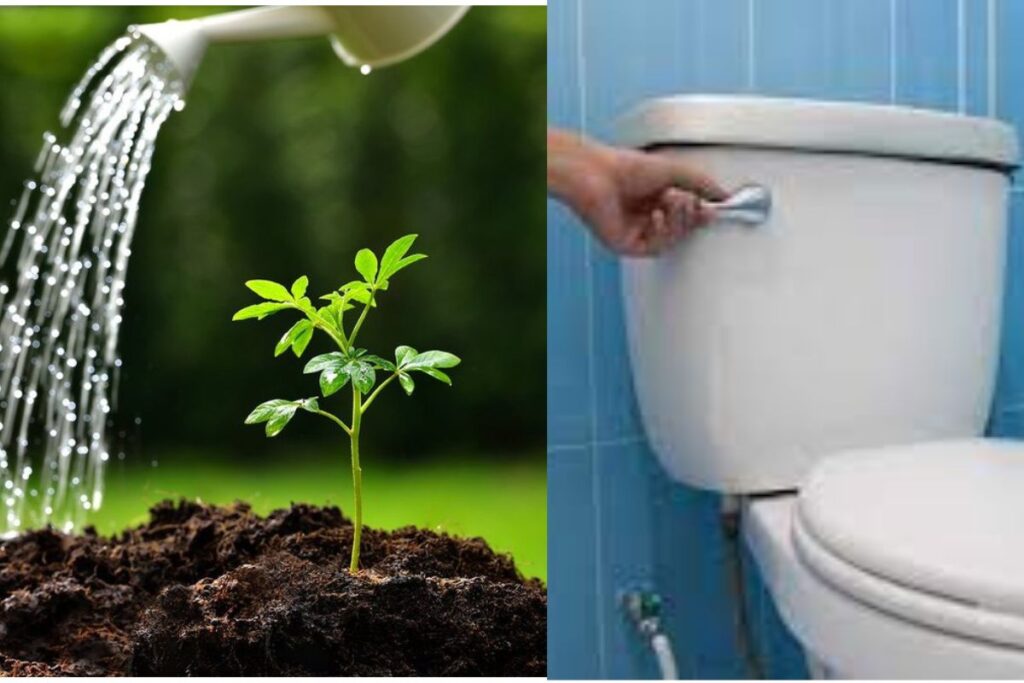In many cases, wastewater is seen as a disposal issue. However, there are various ways to put this wastewater to good use.
Using reverse osmosis water can save you money and help the environment. Read on to learn more about how to reverse osmosis waste water uses.
11 Easy Ways to Use Wastewater from Ro System:
1. Water your plants:
One of the best ways to use RO is to use fresh water for plants. These gallons of waste water are relatively clean and can be used without any worries.
Pour it on your plants, and they will be thankful!
2. Make cleaning solutions:
You can also use this discharge water to make cleaning solutions for your home. Add a little soap, and you’ll have a powerful cleaning agent that can operate on different surfaces.
3. Wash your car:
It can also use a water filtration system to wash your car. It’s less effective than regular water purifiers, but it will still do the job and save you some money.
4. Clean your windows:
It can also use this contaminated water to clean your windows. Add a little vinegar, and you’ll have a robust solution that will leave your windows sparkling clean.
5. Flush your toilet:
Waste RO water pipes can also be used to flush toilet. Pour it into the bowl and let the raw water do its job!
6. Water your lawn:
If you have a lawn, you can use this portable water to keep it green and healthy. Ensure you don’t overdo it; too much waste or water can harm your lawn.
7. Rinse your fruits and vegetables:
You can also use these liters of waste water to rinse your fruits and vegetables. It is a great way to remove any pesticides or other contaminants t that may be on them.
8. Clean your floors:
You can use RO to clean your floors. Just add a little soap, and you’ll have a powerful cleaning solution that will leave your feet sparkling clean.
9. Wash your pets:
You can also use this grey water to wash your pets. Ensure you don’t use too much as it irritates their skin.
10. Clean your gutters:
It can also use this incoming water to clean your gutters. Just add a little soap, and you’ll have a powerful cleaning solution to remove all the dirt and debris from your gutters.
11. Fill up your swimming pool:
If you have a swimming pool, you can use this gallon of wastewater to fill it up. It is a great way to save money on your portion of the water bill and help keep your pool clean.
What To Be Mindful Of Before Ro Wastewater Is Used?

Water Reverse osmosis (RO) is a purification technology that uses pressure to force a solution through a membrane, retaining the solute on one side and allowing the pure solvent to pass to the other.
In most cases, the membrane technology used for reverse osmosis filter is permeable only to water molecules, and as a result,
Water usually has a very high concentration of dissolved solids.
For this reason, before potable water is used for any purpose, it must first be treated to remove these dissolved solids.
Here are some of the things to keep in mind when considering using ROWW:
-ROWW typically has a very high salt content. As a result, it should only be used for irrigation if it is adequately diluted first.
-ROWW also often contains high levels of dissolved organic matter (DOM). While this can make the liters of water appear murky, it is not necessarily harmful.
However, if the DOM level is too high, it can cause problems with plant growth.
-ROWW can also contain trace amounts of chemicals not removed by the RO process.
These chemicals may be harmless but could also potentially harm plants or animals.
As a result, it is essential to have bottled water tested before using it for any purpose.
-Finally, ROWW can contain bacteria and other microorganisms. While most of these are harmless, some could potentially cause disease.
For this reason, it is essential to disinfect water quality before using it.
Why Is the Reverse Osmosis “Waste Water” ArgumentMisleading?
Reverse osmosis (RO) is a technology that removes a wide range of contaminants from water.
It’s one of the most effective ways to purify water, and it’s used in everything from large-scale municipal water treatment plants to small home systems.
One common concern about RO systems is that they produce a lot of water.
For every gallon of water purified produced by an RO system, up to 4 gallons of wastewater go down the drain.
Some people believe this wasted water is a significant drawback of RO systems. However, this belief is based on a misunderstanding how RO systems work.
The water produced by RO systems is not “wasted” at all. It’s reusable water in the purification process.
Here’s a closer look at how RO systems work and why their concentrated water is well-spent.
How Do RO Systems Work?
Reverse osmosis water purifiers use a process known as reverse osmosis to remove contaminants from water.
This process involves passing concentrated water through a semi
So, if you weigh 160 pounds, you should drink 80 ounces of water daily.
Source: freshwatersystems.com
permeable membrane.
The pores in the membrane are small enough to allow water molecules through. Still, they’re too small to allow contaminants such as viruses, bacteria, and dissolved minerals to pass through.
As water is forced through the membrane, the contaminants are left behind and flushed down the drain. The purified water is collected on the other side of the membrane.
The water produced by RO systems is not “dirty” water. It’s clean water that has been stripped of its dissolved minerals.
This water is so pure that It can reuse in the RO system.
How Is Wastewater Reused In RO Systems?
The water is collected in a storage tank in a typical RO system. When the storage tank is complete, the water is pumped back into the system and passed through the membrane again.
This process is known as “recirculation” or “recycling.” It allows RO systems to purify water with very little waste. Some RO systems are designed to produce no waste at all.
The recirculation process also has the added benefit of extending the life of the RO membrane.
Repeatedly passing water through the membrane removes contaminants from the water and deposits on the membrane.
It helps keep the membrane’s pores clean and prevents them from becoming clogged.
What is Reverse Osmosis Waste Water Ratio?
The reverse osmosis process requires specific amounts of water flushed through the system to produce clean, filtered water.
This water is then discarded as waste. The ratio of clean water to water flushed through the system is called the reverse osmosis waste water ratio.
Reverse osmosis systems typically have a water ratio of 4:1, meaning that for every 4 gallons of water produced, 1 gallon of clean water is through the system.
It can vary depending on the specific system and the amount of carbon-filter water.
While reverse osmosis is very effective at removing impurities from discharge water, it is essential to note that it is not 100% efficient.
It will always flush some water that is not filtered through the system, which must be properly disposed of.
The ratio is important when choosing a reverse osmosis system for your home or business.
Be sure to choose a system with a high water ratio to minimize the amount of harmful contaminants.
Is Reverse Osmosis Wasteful? Understanding Ro Wastewater?
While RO systems are highly effective at purifying water, they have one major drawback – wastewater.
For every gallon of clean drinking water produced by an RO system, up to 4 gallons of wastewater are also produced.
It can add up quickly, especially for businesses or households that use a lot of water.
So, what can be done with this water? Is it just wasted water that goes down the drain?
As we explained above, several ways exist to put water to good use.
Why Does Reverse Osmosis Ro System Waste So MuchWater?
Reverse osmosis water systems are one of the most efficient ways to purify water. However, they also waste a lot of water in the process.
The reverse osmosis process relies on a semi-permeable membrane that only allows water molecules to pass through. All other impurities are rejected and flushed away.
While this is great for producing clean, fresh water, it also means much water goes to waste.
This undrinkable water is not suitable for drinking, but It can use for other purposes.
It is a big issue for many industries and households that use a reverse osmosis water purifier. So, what can be done with this normal tap water wastage?
What’s The Danger Of Using Ro Reject Water?
The main concern with using RO reject water is the potential for contamination.
If the rejected water is not managed correctly, it can become a breeding ground for bacteria and other microorganisms.
The concentrated waste products can also corrode pipes and fixtures, potentially contaminating the drinking water supply.
To prevent these problems, it is essential to properly maintain your filtration process and recycle the rejected water safely. Here are a few tips on how to do this:
– Keep your RO system clean and well-maintained. Regularly clean the membranes and other parts of the system to prevent the buildup of contaminants.
– If you have an air gap faucet, ensure it is appropriately installed and not leaking.
– Do not store the rejected water for more than 24 hours. If you need to keep it longer, add a disinfectant such as chlorine or ultraviolet light.
– Use an approved method of wastewater disposal. Check with your local authorities to see what is allowed in your area.
Following these steps, you can safely recycle RO reject recycled water and minimize the environmental impact.
FAQs
1. Is RO Wastewater Safe?
While the concentrated contaminants in water can be harmful if not handled properly, the additional water is not generally considered dangerous.
However, it is essential to follow proper disposal procedures to ensure the waste is not released into the environment where it could cause harm.
2. How Do I Dispose Of RO Wastewater?
Depending on the regulations in your area, there are various options for disposing of quality water supply.
Some common methods include evaporation, deep well injection, and surface discharge.
3. How Can I Reuse RO Water?
RO water can be reused in several ways, depending on the contaminants present and your area’s regulations.
Some common applications include irrigation, cooling towers, boiler feed water, and more.
4. Can I Drink RO Waste Water?
While RO water is unsafe to drink, It can use for other purposes, such as irrigation or boiler feed water.
5. What Are The Benefits Of Using RO Wastewater?
Using RO water waste can help conserve the water quality cost and reduce the amount of waste produced.
Additionally, it can be cost-effective to provide normal tap water for irrigation or other purposes.
6. Are There Any Risks Associated With Using RO Wastewater?
If not handled properly, the concentrated contaminants in RO water can risk human health and the environment.
Following proper disposal procedures and regulations is essential to manage waste correctly.
Conclusion(Reverse Osmosis Waste Water Uses)
There are various ways to put reverse osmosis waste water to good use.
With the proper treatment and management, It can use this normal tap water for agricultural, industrial, or even drinking purposes.
It is essential to consult with experts to determine the best way to treat and manage your specific type of hot water faucet.
With the proper care, the water portion can be a valuable resource.






